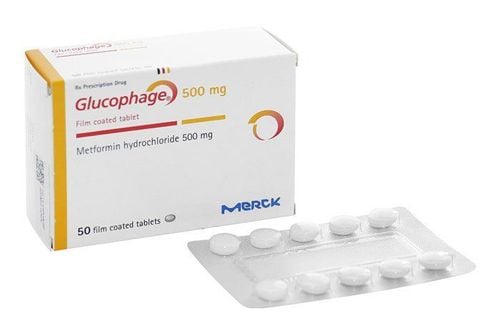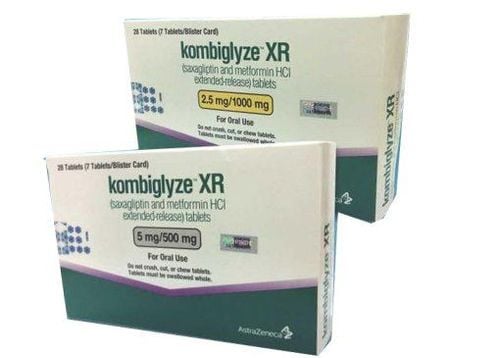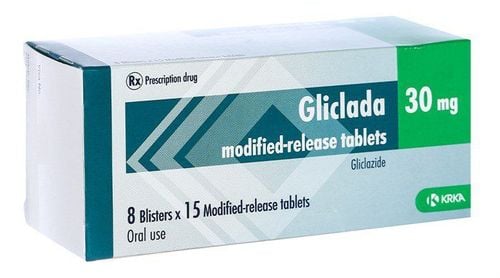This is an automatically translated article.
Glucophage is a drug quite familiar to most patients with diabetes. So what does Glucophage do and how does it work?
1. What disease does Glucophage treat?
Glucophage belongs to the group of diabetes drugs, containing the main active ingredient is metformin.
Glucophage drug is indicated in the following cases:
Non-ketotic diabetes, type II diabetes, especially people who can be overweight, after applying the diet without control blood sugar control. Complementary to insulin therapy. Treatment of type I diabetes, Treatment of type II diabetes, especially in cases of severe obesity and resistance to insulin therapy. Glucophage is contraindicated in the following cases:
Renal failure whether mild, physical or functional. Acute illness with the potential to cause impaired renal function such as conditions causing dehydration (diarrhea, vomiting), fever, infection and/or severe hypoxia such as shock, sepsis, urinary tract infection, lung disease. Person preparing for exploration with iodinated contrast agents (UIV, angiography). Metformin should be discontinued 48 hours prior and reinstituted only 48 hours after exploratory radiographs. Decompensated ketoacidosis, diabetic pre-coma. The clinical presentation of an acute or chronic illness can lead to severe tissue hypoxia such as heart or respiratory failure, recent myocardial infarction.... Liver failure, acute intestinal toxicity. Pregnant and lactating women.

Thuốc glucophage là một loại thuốc dùng trong điều trị bệnh tiểu đường
Starting dose: Use 500mg of Glucophage twice daily or 850mg once daily. Dosage Adjustment: Increase approximately 500mg per week or 850mg every 2 weeks as tolerability Maintenance dose is approximately 2,000mg per day. The maximum dose is 2,550 mg per day. For extended-release formulations:
Initial dose: Use a dose of 500 - 1,000 mg of the drug once a day; Dosage Adjustment: Increase approximately 500mg every week according to tolerability. Maintenance dose is about 2,000 mg per day The maximum dose is 2,500 mg per day. Usual Glucophage dose for children with type 2 diabetes (for children over 10 years of age) with an immediate-release formulation:
Initial dose: Can give children a dose of 500 mg twice daily. Dosage adjustment: May increase by approximately 500mg per week according to tolerability.Maintenance dose is about 2,000mg per day Maximum dose is 2,000mg per day. Glucophage dosage for children younger than 10 years has not been studied and decided.
When taking Glucophage, you need to pay attention to:
Take the medicine as directed by your doctor. Consult your doctor if you have any questions while taking the medication.

Người bệnh nên sử dụng thuốc Glucophage theo chỉ dẫn của bác sĩ
2. What side effects can be encountered when using Glucophage?
Glucophage can cause the following side effects:
Muscle pain or weakness Feeling of numbness or cold hands and feet Difficulty breathing Feeling dizzy, tired, lightheaded, or very weak. Abdominal pain, nausea with vomiting. Slow or irregular heartbeat Feeling short of breath even with mild exertion Swelling or rapid weight gain Flu symptoms such as fever, chills, body aches. Headache Weakness Diarrhea, flatulence. These are not all the possible side effects of Glucophage and others may occur. If you experience any side effects tell your doctor right away.
Glucophage is a drug to treat diabetes, to ensure effective treatment, as well as avoid side effects, patients need to take the drug according to the instructions of the doctor or pharmacist.
Follow Vinmec International General Hospital website to get more health, nutrition and beauty information to protect the health of yourself and your loved ones in your family.
Please dial HOTLINE for more information or register for an appointment HERE. Download MyVinmec app to make appointments faster and to manage your bookings easily.













